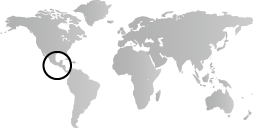The Viceroyalty of New Spain comes under increasing pressure from opposing political factions pursuing different interests. Visions of independence and nation-building among criollo elites (Spaniards born in the Americas) and wealthy mestizos (people of mixed Spanish-Indian descent) are fostered by a strong interest in their own culture and history in the Americas. Insurgencies and revolts persist throughout the century. Many Indian groups join uprisings and fight for local goals. In 1821, independence from Spain leads eventually to the formation of separate nations: Mexico ends the monarchy and establishes a federal republic. Guatemala separates from Mexico, and Honduras, Nicaragua, and El Salvador break away from Guatemala. Independence from Spain brings some improvements to Indian peoples, among them the abolition of mandatory labor for state and church, and the payment of tribute. Demands for political, cultural, and economic autonomy, however, are fruitless. Liberal regimes in Mexico, Guatemala, and El Salvador, in an effort to accelerate commercial growth in the second half of the century, increase the splitting-up and sale of Indian communal lands, which results in the rapid growth of an impoverished, increasingly rebellious rural proletariat.
Artistic production declines because the region is in a constant state of war. Neoclassicism, taught at the influential Academia de San Carlos in Mexico City, is preferred in art and architecture. Countless richly decorated church facades and interiors of the previous centuries are now considered grotesquely ornate. They are destroyed and replaced in ambitious redecorating programs. In an emerging sense of Mexican culture and identity, the remains of earlier indigenous civilizations are investigated, recorded, and collected by explorers of many different nationalities. Painters and sculptors employ themes from ancient Mesoamerican cultures, particularly the Aztec, as well as other historic and contemporary events.


